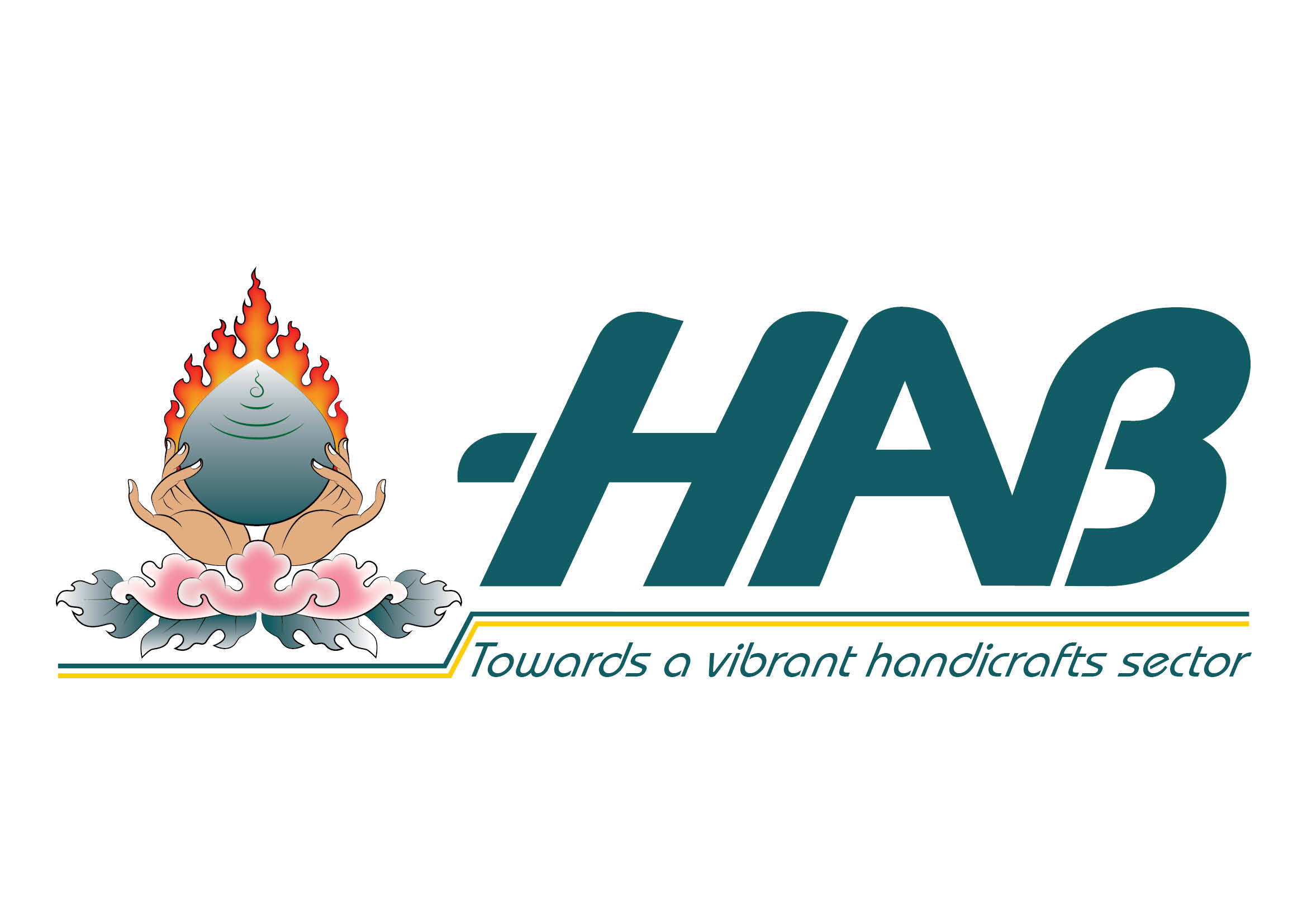Wood products
Bhutanese wood products include exquisite utility as well as decorative products such as turned wooden bowls (dapa), cups (dza phob), plates, and containers ranging a wide gamut of shapes, sizes and colors. These products are made from special wood burls and roots of trees in Bhutan. Woods used to make the products include tashing (Juglans regia), hashing (Taxus baccata), baashing (Picea spinulosa), sermaling shing (Acer camphellii) and eto meto (Rhododendron arboretum). Since these products are useful in daily life and also as souvenirs it makes for a favorable investment. Some wooden articles are saved as precious family heirlooms. Dzache, the burl of trees or the special wooden knot on trees used to make dza phob or wooden bowls can be found in the maple, rhododendron and avocado. It is said that the most valuable Dzache is Dza Ling Choem, which is believed to emit rays of light at night, and special light rays during the day. Folklore abounds about dza phob nullifying the poison in curry and drinks by draining out the vileness. Other traditional cups like boephor, gaphor and japhob are also made from wood. Traditional wooden bowls are used to serve food such as the round ones with a lid – bou dapa and dum chem dapa which are used to serve rice. Tsamder, a bowl with a lid, was originally used in the northeastern part of Bhutan to serve roasted wheat and barley flour. Thoke is used to store fruits and Tsamder to serve snacks. Starting from February or March, the roughly curved out burls are soaked in cold water for three months to rid the smell of wood, also for fortification. The pieces are then dried over fire and left in the sun for a month or so. They are then boiled in water to straighten them after which they are dried thoroughly in the shade. These pieces of hardwood are spun on a manual pedal lathe or the electrically operated motor lathe to craft them into finished products. The motor lathe can speed up the process of crafting by three times compared to the pedal lathe. The product is smoothed using the leaves of sogsogm (Tsuga Dumosa). Finally, the product is lacquered with an indigenous substance known as “sey:” seven layers make for the finest quality, four for mid-level and three for low quality. The Bhutanese traditional drum (Nga) and drumstick (Ngayog) are produced by artisans skilled in woodturning, wood carving, leather and painting.
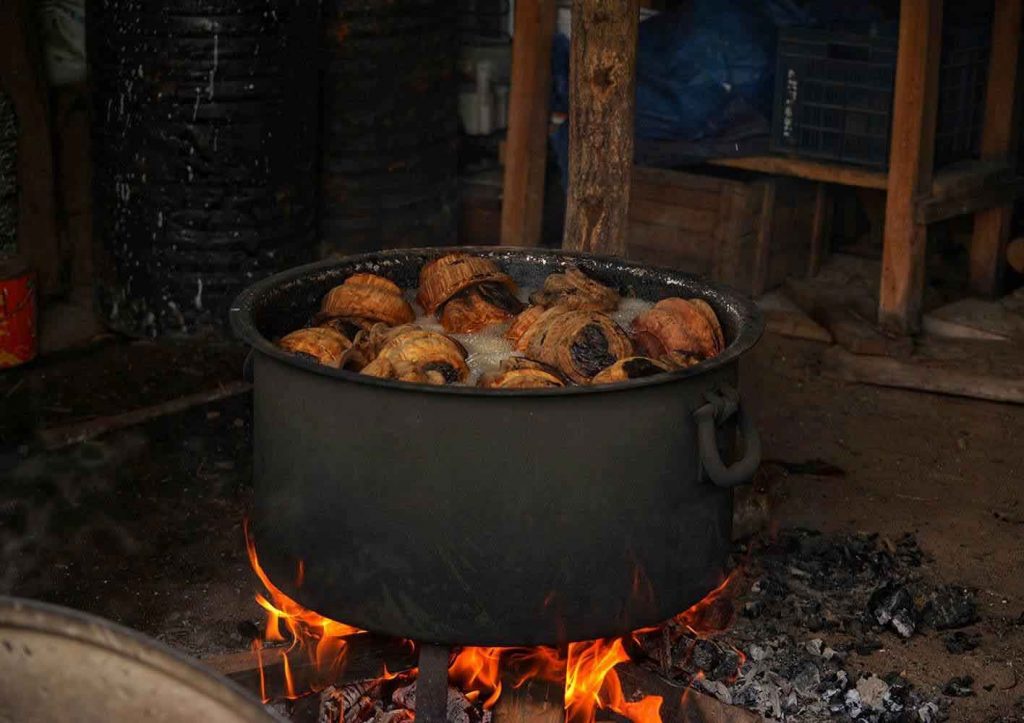
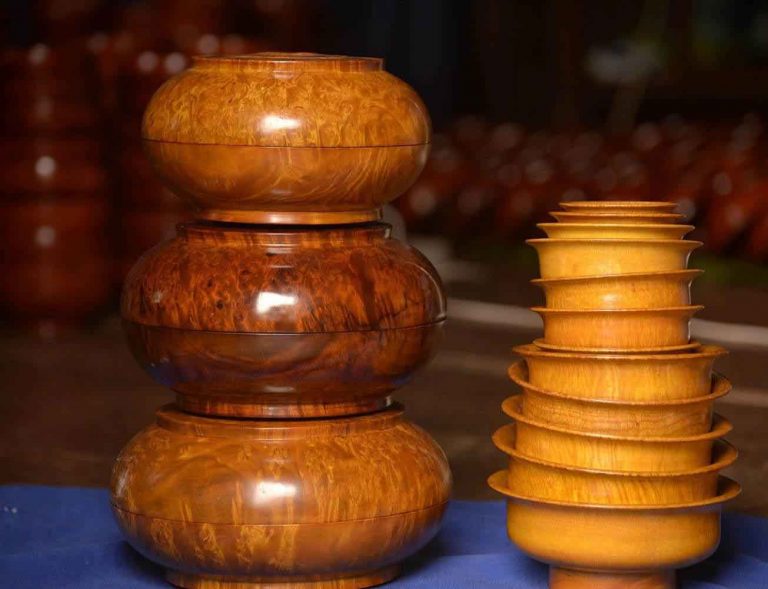
Textile products
The textile products in Bhutan are spectacular-unique as well as beautiful. Some of the most intricate weaves are produced by rural artisans from the hamlet of Khoma in Lhuntse-yes, the famous Kisuthara, and so are the warm woolen Mathra and Yathra of Bumthang. Bhutanese textiles are often converted into trendy fashion wear that are flaunted by urbanites and international celebrities. Bhutan’s textile portfolio has gone notches up after visiting international celebrities and models fell in love with and adopted Bhutanese textile into their wear. Bhutanese textile consists of three types of weaving patterns: plain weaves that are usually woven in patterns with stripes and plaids including Martha, Sertha, Thara, Kamtham Jardrima; warp pattern weaves characterized by the supplementary warp floating technique that forms bands of repeated motifs on the base including Mentsi Martha, Sertha, Lungserma, Dromchuchem and Mentha; and finally the weft pattern weaves popularly referred to as continuous weft patterns which are very similar to textiles of Southeast Asia including Sapma, Tingma, Ngoshom, Kishuthara and Shilochem.
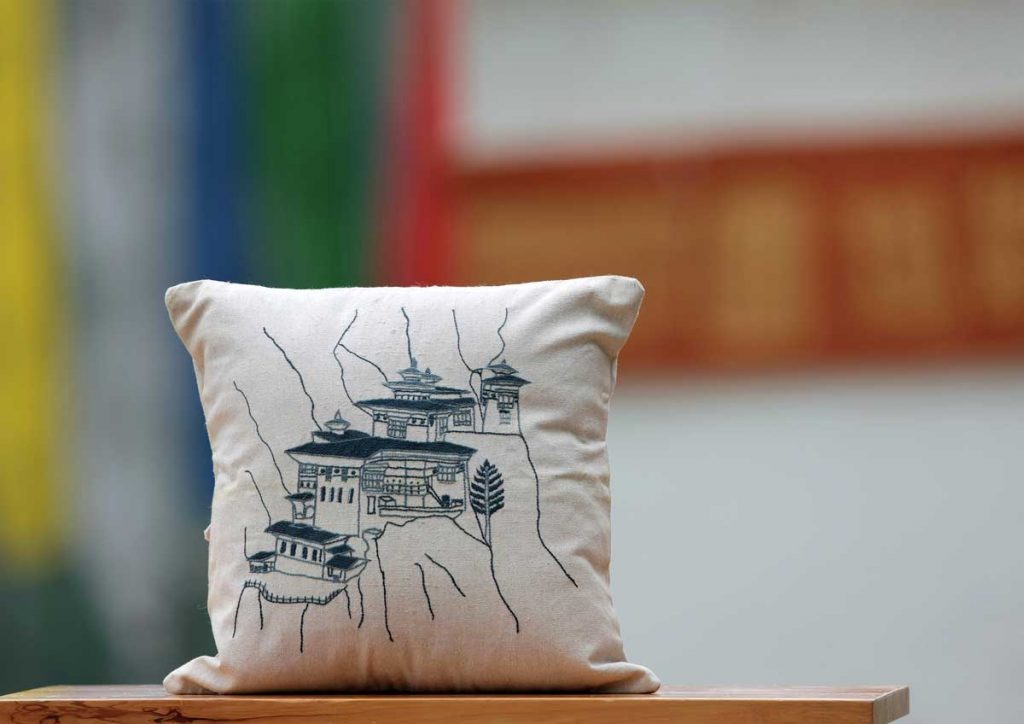
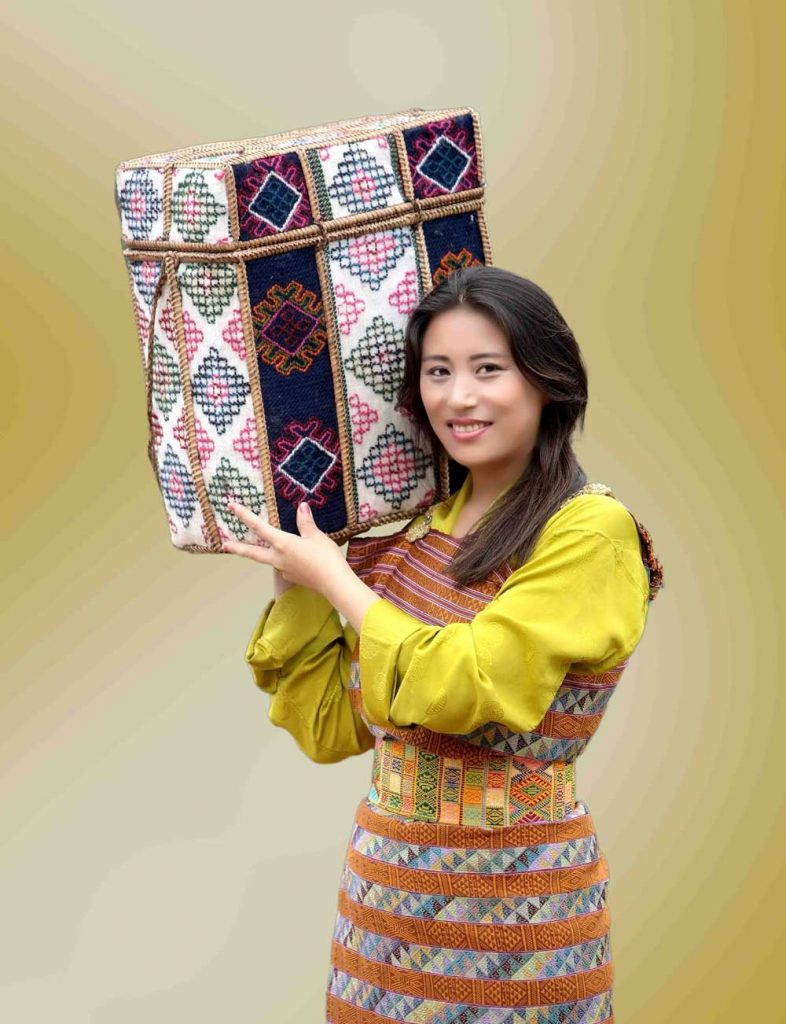
Earthen/clay products
Clay products apart from the religious figurines in lhakhangs and monasteries include utensils like pots ranging from the big ones to store water and brew alcohol to small ones to burn incense. The craft is almost extinct except for a couple of women in Gangzur in Lhuntse who produce utensils from the yellow and red clay available by the hillsides which they collect when not engaged in farming work. The clay is kneaded into a dough and spread on a wooden thatch after which the inside is gouged out and the pots shaped manually. The pots are then baked in a fire till they are firm and durable. The craft has disappeared from the villages in Paro and also from Khasadrapchu in Thimphu. Clay utensils are produced by some of the poorest and most vulnerable artisans in the country. Last heard, there were only three potters, two female and one male, in Gangzur. Though the craft is labor-intensive, the rewards are absent as Bhutanese potters are looked down upon as lowly craftspeople. Ideally, the focus must be to uplift and upgrade the skills of the potters to produce ceramics, which would afford better chances of survival in a fast developing and changing market that demands finished and polished products of art. Innovation in finishing, design, and packaging are some of the areas that potters can improve on. Imported glaze, finer clay material, better baking standards, intricate and creative decorations and embellishments could sell Bhutanese products at international markets.
Paintings/Art
Bhutanese traditional art is different from contemporary art: it does not encourage expression of the self. Its emphasis is on realizing merit through means of art that expresses the relationship of the artist with nature, other sentient beings and the spiritual realm. Bhutanese art follows rules of symmetry, colors and themes that are adopted from Indian, Tibetan and Chinese art to blend and fuse into one original whole. The traditional art thus produced include Thangkas and Thongdroels plus other religious art. It is believed that whoever views them will be cleansed off sin and gain merit. As also is believed that the unsigned works of art help the artists purify themselves and gain merit if created with an unsullied mind. The Bhutanese handicraft market has many Thangkas or small religious scrolls that can be bought as souvenirs or set up at home altars. Tourists can also buy these scrolls as takeaway. Apart from traditional Bhutanese art, VAST (Voluntary Artists Studio Thimphu) has grown from a small nucleus of founding members to a contemporary art movement in the country.
Cane and bamboo products
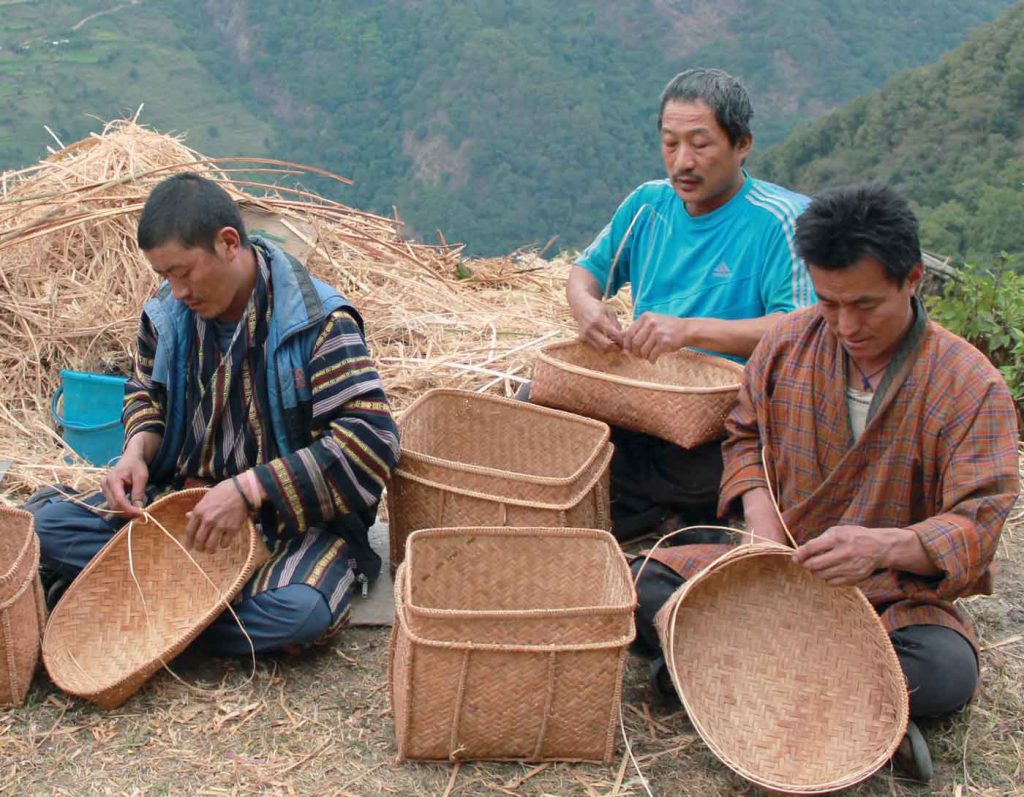
Bhutan has over 30 native bamboo species. People use this raw material in combination with soft and hard wood from oak, cedar, maple walnut, etc to produce some useful products that help make daily life easier and chores more efficient. The Kheng region of Bhutan is famous for its cane and bamboo products which comprise a variety from bangchus-light, round containers to hats (belo), baskets (pangchu), wine caskets (palang), mats, butter-tea blenders, bow and arrows, quivers (soray palang), etc. These are made of bamboo/rattan strips-thin, braided and often dyed yellow, green, maroon and purple. The baskets are woven from fine cane strips and are two-pieced to carry around water, rice and other kinds of food. The other popular products in this category are Tsezem (basket) which is used to store dried meat and carry food items, also used as shopping bags; lakchung-a different type of basket used to store fruit and to serve dry food items on occasion, also used to dump paper waste or as a flower vase; beykhur (gift box) used to store yarn, poe (incense sticks), jatsa (sieves/tea strainers for butter-tea or milk), sipa (butter and cheese container), palang (alcohol and water container), dala (rice de-husker) and mats. Apart from these, Bhutanese craftspeople also use bamboo and cane to make musical instruments.
